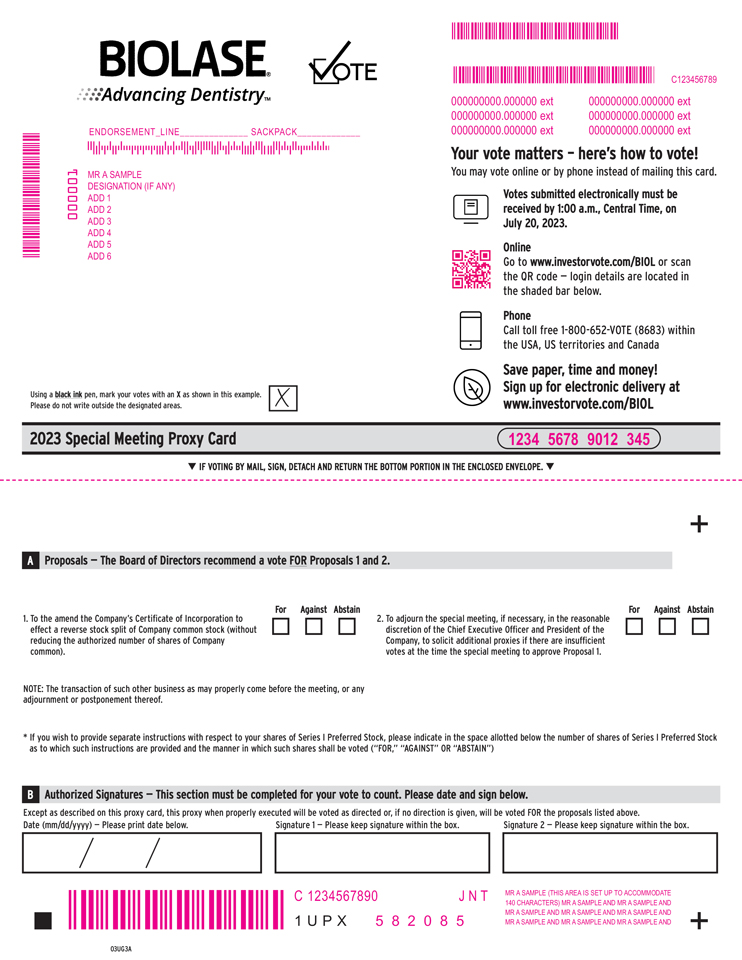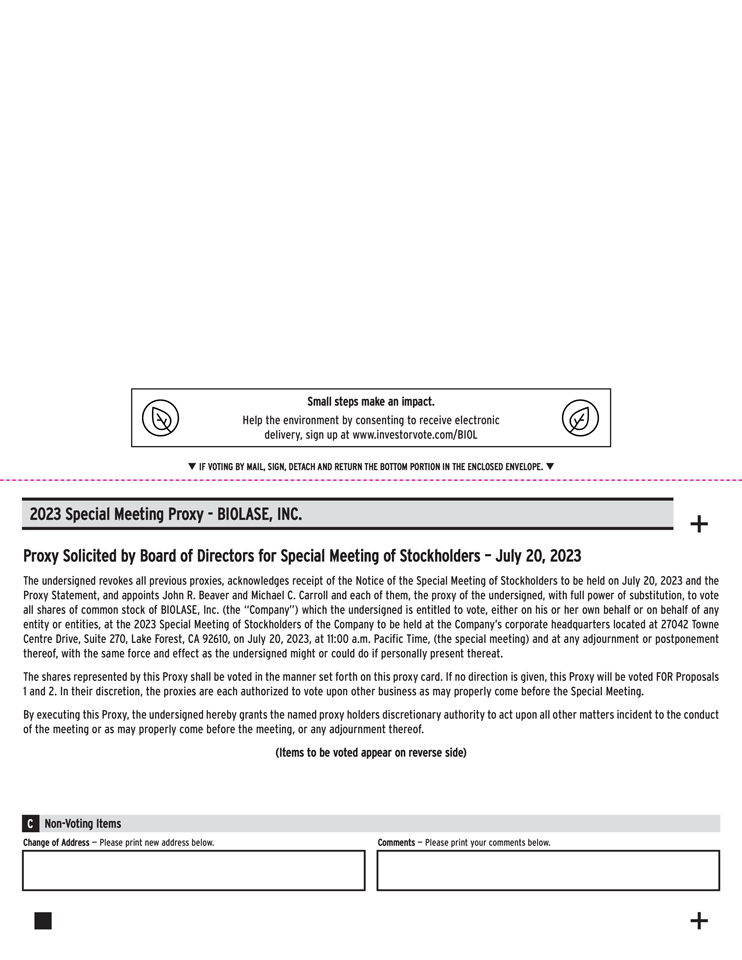Purpose and Overview of the Reverse Stock Split
Our primary objective in effectuating the reverse stock split would be to attempt to raise the per-share trading price of our common stock to continue our listing on the Nasdaq Capital Market. To maintain listing, the Nasdaq Capital Market requires, among other things, that our common stock maintain a minimum closing bid price of $1.00 per share. On June 20, 2023, the closing price for our common stock on the Nasdaq Capital Market was $0.0819 per share.
On January 11, 2023, we received a deficiency letter from the Nasdaq Stock Market notifying the Company that, for the last 30 consecutive business days, ending on January 10, 2023, the bid price for the Company’s common stock had closed below the minimum bid price for continued inclusion on the Nasdaq Capital Market pursuant to Nasdaq Listing Rule 5550(a)(2) (the “minimum bid price rule”). In accordance with Nasdaq rules, the Company was provided an initial period of 180 calendar days, or until July 10, 2023, to regain compliance. If the Company does not regain compliance with the minimum bid price rule by July 10, 2023, Nasdaq will provide written notification to the Company that its common stock may be delisted.
On June 8, 2023, we were notified by Nasdaq that we did not meet the minimum closing bid price requirement of $1.00 for continued listing, as set forth in Nasdaq Listing Rule 5550(a)(2), as Nasdaq had determined that as of June 8, 2023, our common stock had a closing bid price of $0.10 or less for ten consecutive trading days, from May 24, 2023 through June 7, 2023. As such, Nasdaq has determined to delist our common stock from the Nasdaq Capital Market and to suspend trading of the common stock at the opening of business on June 20 2023, and file a Form 25-NSE with the Securities and Exchange Commission, unless we timely requested a hearing on an appeal of this determination by the Nasdaq before the Nasdaq Hearings Panel. We timely requested a hearing to appeal this determination, which stayed the suspension of our common stock pending the panel’s decision.
Our Board is seeking stockholder adoption of the Amendment Proposal in order to have the authority to effectuate the reverse stock split as a means of increasing the share price of our common stock at or above $1.00 per share in order to avoid further action by Nasdaq, in the event we are not able to satisfy the minimum bid price requirement in adequate time before the deadline. We expect that the reverse stock split would increase the bid price per share of our common stock above the $1.00 per share minimum price, thereby satisfying this listing requirement. However, there can be no assurance that the reverse stock split would have that effect, initially or in the future, or that it would enable us to maintain the listing of our common stock on the Nasdaq Capital Market. We are not aware of any present efforts by anyone to accumulate our common stock, and the proposed reverse stock split is not intended to be an anti-takeover device.
In addition, we believe that the low per-share market price of our common stock impairs its marketability to, and acceptance by, institutional investors and other members of the investing public and creates a negative impression of the Company. Theoretically, decreasing the number of shares of our common stock outstanding should not, by itself, affect the marketability of the shares, the type of investor who would be interested in acquiring them or our reputation in the financial community. In practice, however, many investors, brokerage firms and market makers consider low-priced stocks as unduly speculative in nature and, as a matter of policy, avoid investment and trading in such stocks. Moreover, the analysts at many brokerage firms do not monitor the trading activity or otherwise provide coverage of lower-priced stocks. The presence of these factors may be adversely affecting, and may continue to adversely affect, not only the price of our common stock but also its trading liquidity. In addition, these factors may affect our ability to raise additional capital through the sale of our common stock.
We also believe that a higher stock price could help us attract and retain employees and other service providers. We believe that some potential employees and service providers are less likely to work for a company with a low stock price, regardless of the size of the company’s market capitalization. If the reverse stock split successfully increases the per-share price of our common stock, we believe this increase would enhance our ability to attract and retain employees and service providers. Further, the reverse stock split will result in
8





